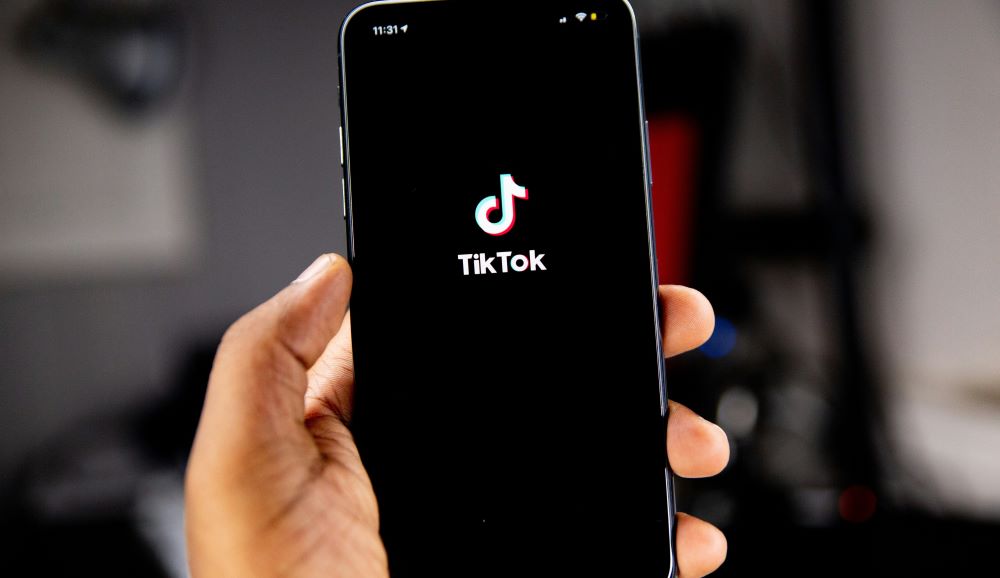 UK sports publisher GiveMeSport hired Benny Bonsu last year to head up its newly launched dedicated hub for women’s sports, part of a push to invest more in women’s sports reporting. In this Q&A, Bonsu discusses the changes we’re seeing across the industry in coverage of women’s sports, and which sorts of content are working best, as well as brands’ hesitancy to invest in the space.
UK sports publisher GiveMeSport hired Benny Bonsu last year to head up its newly launched dedicated hub for women’s sports, part of a push to invest more in women’s sports reporting. In this Q&A, Bonsu discusses the changes we’re seeing across the industry in coverage of women’s sports, and which sorts of content are working best, as well as brands’ hesitancy to invest in the space.
Why did GiveMeSport decide to start covering women’s sports separately, and investing more in that coverage?
I joined GiveMeSport in April last year, and when I joined, I was the first women’s sports editor to be hired in the UK, which was kind of shocking. When I joined, my first question was “Why are you doing this now?”, because if you know GiveMeSport, it’s traditionally been very male-focused.
The owners at the time, and still now, have realised the impact of women’s sports. There’s such a high percentage of women who participate in sports and are interested in sports, but it only receives five percent of coverage. So when I joined, the aim was to change that, and to work towards 50:50 coverage on our site. Then the question was, how do we do that?
When you look at the big broadcasters or newspapers, when a women does something really outstanding, that might appear on the front or the back of a newspaper. But it only really gets coverage for that day, the coverage isn’t continuous. At the time I was hired the FIFA Women’s World Cup was also coming up, so a lot of publishers were making announcements about covering women’s sports – The Telegraph, COPPA90, and the BBC all made announcements about upping their reporting on women’s sports.
But for us, we wanted to make sure we weren’t just making a big noise over the summer for the women’s World Cup, but to sustain it over time. So we asked ourselves, are we just going to cover women’s football, or are we going to cover all sports? Our vision is that we want ten year olds growing up now to be saying in ten years time that their first time encountering women’s sports was in GiveMeSport, and that’s what they’ve grown up with. And for that to be the case we need to be covering all sports, not just football.
We’re trying with our reporting to be honest and to tell real stories, rather than trying to make everything look good and saying everything is fantastic when it’s not. We’re really just trying to give women’s sports a face and a voice.
What’s the reception been like since GMSWomen was launched??
It’s been really positive. Our main Facebook page has 25 million fans, and when we started there were a lot of trolls! But we didn’t want to focus on them, we wanted to keep on doing our thing, and we knew they’d eventually get used to it. We’ve kept being positive, rather than getting into arguments. And now we’ve seen on Facebook, on Twitter, on Instagram – wherever we’ve been people have been really positive, and they’ve recognised it’s a change we want to make.
How important is video for GiveMeSport Women?
For us it’s 50:50, video is very important to us. We have 16 freelances who make content for us, but also six videographers, and six presenters who go out and film content. So today for example we have three different teams out filming different content. We’ve found video is really important for younger audiences, and it’s great at generating conversations, and that’s what we want to be encouraging.
And for ad revenue it’s very important too, so for our website and for Twitter we want to create as much quality video content as we can to maximise that. But we also know editorial still works very well for us so that’s why we keep a 50:50 split.
What sort of content is working well for GiveMeSport at the moment?
At GiveMeSport we’ve always wanted to tell stories, so that’s long-form video content which lives on YouTube and on our own website. But we know that short-form content works really well on Twitter, so around 1:30 to 2:15 in length is best. We also find that 5-6 minutes works really well on Instagram.
On Twitter, we’ve found short form videos where we’re interacting with fans, and getting predictions and opinions and that sort of thing, really engage people. And it allows us to start conversations and helps us grow our audience. Engaging with fans on Twitter, getting their opinions and getting them to tag their friends, that works really well.
On Instagram, we’ve has a lot of success allowing the athletes to take over. We found female athletes tend to be more happy to open up in interviews and do Q&As and things like that. And now we’ve been doing that for a while we’ve built our credibility because athletes know we won’t mute them, and we won’t try and make them sound polished, so that’s helped us get more athletes involved.
Then on Facebook, our audience is much older, it’s mums and aunties and dads. They like to read editorials rather than watch videos, and then they like to have their own conversations and arguments in the comments section.
So over the last eight months we’ve really been able to identify which sort of content is working well, and we’ve used that to help grow our audience. And that’s been very important too as we decided from the start with GiveMeSport Women to not put any money behind promoting our content, because we wanted to see if we could grow organically.
Are we seeing genuine progress from the rest of the industry in terms of giving women’s sports more coverage?
I think we are seeing a movement for change, but it’s not at the speed we want it to see. The summer was great because everybody was covering it, every day there was reporting on women’s sports. But there’s been a big drop off since the summer, and now it feels like maybe once a month there will be a big pullout on women’s sports in one of the newspapers, once a week something interesting will come out from one of the newspapers. And it’s kind of disheartening because for us it’s constant, we have a team of 16 freelancers solely focused on covering women’s sports.
It would be great to see more from other publications. It’s not a competition for us at the moment, because there’s nothing to compete with! Until we get to the point where 50 percent of sport coverage is of men’s sports, and 50 percent is of women’s sports, then we’re not competing with each other. To get to that point, we need to work together, and get all newspapers and broadcasters on board.
We know that women’s sports isn’t the same as men’s sports, and we’re not trying to compete in that way. It’s different, and it offers something different to the market. But all publishers need to be committed to it, it can’t just be us. At the moment, we at GiveMeSport are killing ourselves to try and cover everything!
People sometimes point to the smaller audiences for women’s sports compared to men’s sports as a justification for them receiving less coverage, how do you respond to those people?
Everyone has mothers, sisters, aunties grandmothers… imagine if it were your sister who was a professional, and you knew they had worked so hard to get to that level. And yet they’re being ignored, while the men are getting all the attention. We’re not asking for the same money as the men because we know the audiences are different, but surely we can give them coverage?
Aside from the professional athletes, think about young girls who are growing up and are interested in sports. We know that playing sports can have great benefits for young girls. The vast majority of women in leadership positions played some sort of team sport while they were growing up. It gives girls a lot of confidence and boosts their self esteem. But a lot of girls stop playing when they get to 11-14 years old because their bodies change, and they’re told they shouldn’t do it anymore and they’re put down for it.
But imagine a world where we had 50:50 coverage. Girls would see this coverage and they’d want better for themselves, and they’d have more confidence to go out and play sports without worrying about being judged or trolled for doing it.
Do brands appreciate the importance of investing in this space?
No, most are still on the fence, they’re only really interested in the big events, so for example the next big event is the SheBelieves Cup, and you’ll see a few big brands jump on that. But then you’ve got the Algarve Cup which is huge in Europe, and yet nobody covers it, and brands aren’t as interested. But we’re going to cover it because it’s really good, and it needs to be spotlighted.
You’ve also got brands like Visa who did really amazing things in the World Cup, but they’re not necessarily working with the right platforms, so they’re not reaching the audiences they need to reach. A lot of brands prefer to stick with men’s sports and with traditional media because it’s what they know and what they’ve always done.
The brands we work with, like Unilever, Nike and Pro:Direct, they get it. They understand that there’s a big opportunity to invest in women’s sports now while it’s growing. And they know they’ll build brand loyalty from our audiences because they were the brands who didn’t just sit on the fence.
Do you think women’s coverage will always be kept separate from men’s or will it eventually be rolled back in as it reaches parity?
This is a conversation me and my CEO have all the time – do we need to call it GiveMeSports Women, or do we just keep it mixed in with the rest of GiveMeSport? On one hand, the coverage of women’s sports just isn’t there at the moment, so we need to separate it out while we build it. But on the other hand, if we’re trying to promote equality, then maybe we should just call it GiveMeSport because that’s what it is – whether it’s women or men playing it, it’s all just sports!
But ultimately we decided we need to label it differently, until we get to that point of 50:50 coverage.




